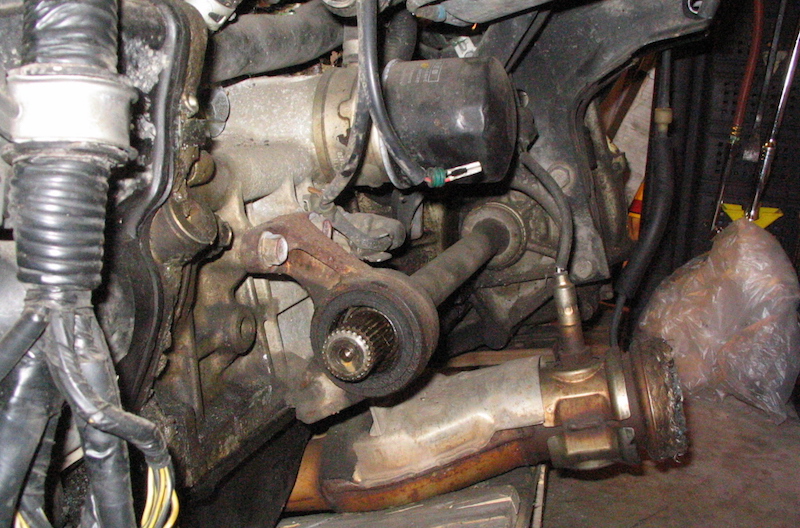So your check engine light is on. As you probably know, the check engine light (CEL) can light up for all sorts of reasons. But since the introduction of OBD-II back in the 1990s, many of those reasons are stored in a standardized set of diagnostic trouble codes that can be accessed with a generic code reader.
The good thing about the CEL and the entire OBD-II engine management and diagnostic system is that it takes a lot of the guesswork out of what's actually going on with a vehicle's engine and drivetrain. You or a tech can connect a code reader to the OBD-II port and quickly access any trouble codes that are stored in the engine computer, pointing you in the right direction for diagnosis and repair.
Note: Code scanning is one of the free services at your local Advance Auto Parts store.
Where it can get tricky, though, is interpreting what the trouble codes mean. At times, there's a certain amount of reading between the lines needed to come up with an informed conclusion on why a certain code might be stored—and a single problem might cause a cascade of trouble codes to all be stored.
To help you learn more about these codes and decide whether the issue is one you can tackle yourself or one that you should take to a trained technician, Advance Auto Parts will be breaking down common codes. In this article, we focus on trouble code P0133 and what it means.

P0133 (O2S (Bank 1 Sensor 1) Slow Response) — What It Means
Every car has oxygen (O2) sensors in the exhaust stream that monitor the makeup of exhaust gases in real time. The voltage signal from the O2 sensors is an indication of air/fuel ratio and the PCM uses this information to calculate fuel metering and ignition timing for best performance, fuel economy and emissions level. A P0133 code means that there's some lag time between a change in load (as in, pressing on the gas pedal) and when the signal is communicated to the PCM. This can be a problem, since the PCM needs to monitor air/fuel makeup in real time.
Symptoms
- Poor fuel economy
- Poor performance/acceleration
- Black smoke from exhaust
- Rich-running condition
- Rough-running
- Poor idle
- Stalling
- Difficulty starting
- In some cases, there might be few or no symptoms
What Happens If I Ignore It?
Like with most O2 sensor problems, you can most likely keep driving with a P0133 code, but you'll want to get it fixed. You'll be using more fuel and won't have a chance of passing an emissions test if required in your area. Also, if the rich-running condition goes on long enough (and is severe enough), you run the risk of damaging the catalytic converter, which will seriously blow up any repair bills.
Possible Fixes
- As with many other problems, your first step should be to clear any codes in the PCM and test drive the vehicle to see if the codes return and the CEL lights up again.
- Locate the O2 sensor (in this case, it will be the one closest to the manifold on the driver's side cylinder bank of a V6 or V8 engine) and inspect it for damage, corrosion, loose wiring.
- Check the Mass Air Flow (MAF) sensor for dirt, contamination, damage or loose wires. In some instances, a bad reading from the MAF can be enough to change the PCM's fuel/air strategy and trigger a problem which will also cause an O2 sensor-related code.
- Check for a vacuum leak or exhaust leak —again, in certain instances this could alter fuel/air calculations and cause an O2 sensor-related code.
- drive the vehicle to see if codes return.
- If everything else checks, chances are it's the O2 sensor. You can test the sensor this way: With the engine warm, using a multimeter, carefully connect the backprobe to the sensor's electrical connector, then connect the positive lead to the backprobe. Connect the negative lead to a good solid ground on the vehicle. With the multimeter set to the 1-volt scale and key on/engine off, voltage should read between 0.1 and 1 volt. Start the vehicle and the reading should begin to fluctuate rapidly. If the reading doesn't change, you can presume the O2 sensor is at fault.
- If you're still in doubt about the O2 sensor, create a small vacuum leak while the engine is running and see if the voltage drops. You can also try closing the throttle body's choke a little or spray some carburetor cleaner down the throttle body with the engine running. Voltage should spike with either of these.
- If you don't see any changes in voltage with these tests, replace the sensor, clear the codes and test drive the vehicle.
The O2 sensor is a vital part of any vehicle's emission control setup. Replacing it can be a little tough, however. This is a part that's subjected to thousands of heat/cool cycles and is usually nearly seized into its threads. Locate the sensor and saturate it with a good amount of penetrant, then let the penetrant do its job for an hour or two before you even start wrenching on it. You might also find it necessary to use a universal joint, extensions and other adapters to access the sensor. In some instances, it might even be necessary to run the engine for awhile and then work on removing the sensor while the engine is still fairly warm.
Have you swapped out a faulty O2 sensor before? Let us know in the comments.








